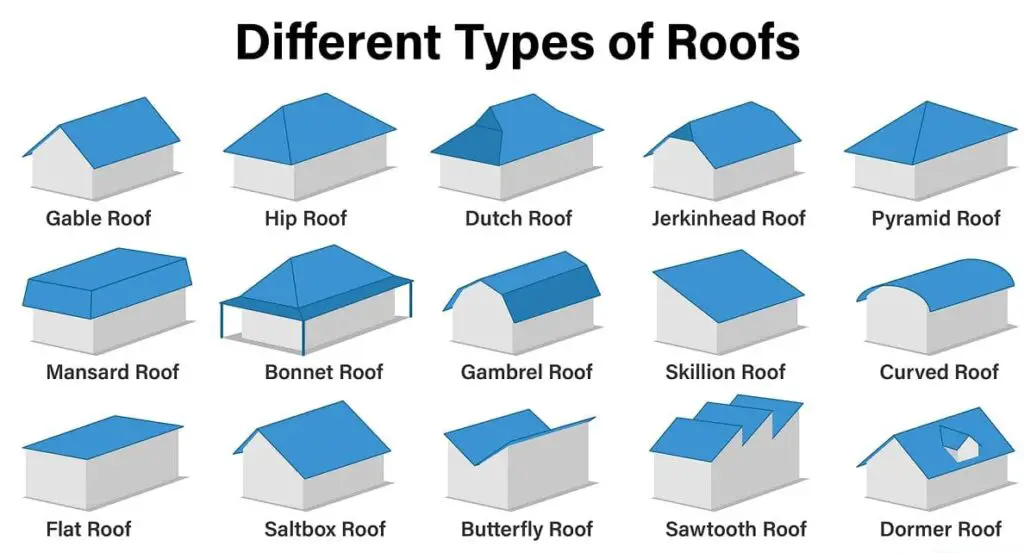Roofs are an essential component of any home, offering protection from the elements while contributing significantly to the overall aesthetics and energy efficiency of the structure. The right roof can enhance curb appeal, provide durability, and even reduce energy costs. However, with a myriad of roofing options available, choosing the best type for your home can be a daunting task. This article aims to demystify the various types of roofs, explaining their benefits and drawbacks, to help you make an informed decision.
Introduction to Roofing Options
The type of roof you choose impacts not only the appearance of your home but also its functionality and longevity. Factors such as climate, architectural style, budget, and personal preference all play a role in determining the most suitable roofing material. In this article, we will explore the most common types of roofs, detailing their characteristics, advantages, and disadvantages. By understanding the different options, you can select a roof that meets your needs and complements your home’s design.
1. Asphalt Shingles
Overview: Asphalt shingles are the most popular roofing material in the United States, known for their affordability and ease of installation. They come in various colors and styles, offering flexibility in design.
Advantages:
- Cost-effective
- Easy to install and repair
- Available in a wide range of colors and styles
- Durable with a lifespan of 15-30 years
Disadvantages:
- Prone to damage in extreme weather conditions
- Shorter lifespan compared to other materials
- Can be less environmentally friendly due to petroleum-based components
Ideal For:
- Homeowners looking for an economical and versatile roofing option
- Homes in regions with mild weather conditions
2. Metal Roofing
Overview: Metal roofs are gaining popularity due to their longevity and energy efficiency. They are available in various materials, including aluminum, steel, and copper, each offering unique benefits.
Advantages:
- Long lifespan of 40-70 years
- Highly durable and resistant to extreme weather
- Reflects solar heat, reducing cooling costs
- Environmentally friendly and recyclable
Disadvantages:
- Higher initial cost compared to asphalt shingles
- Can be noisy during rain or hailstorms
- Requires professional installation
Ideal For:
- Homeowners seeking a durable and long-lasting roofing solution
- Homes in areas prone to severe weather conditions
3. Wood Shingles and Shakes
Overview: Wood shingles and shakes offer a natural, rustic appearance that blends seamlessly with the environment. Shingles are machine-cut for a uniform look, while shakes are hand-split for a more rugged appearance.
Advantages:
- Aesthetically pleasing with a natural look
- Provides good insulation
- Can last up to 30 years with proper maintenance
Disadvantages:
- Requires regular maintenance to prevent rot and insect damage
- Prone to fire, unless treated
- More expensive than asphalt shingles
Ideal For:
- Homes in areas with moderate climates
- Homeowners desiring a natural and unique aesthetic
4. Tile Roofing
Overview: Tile roofs, made from clay or concrete, are known for their distinctive appearance and durability. They are common in Mediterranean, Spanish, and Southwestern-style homes.
Advantages:
- Extremely durable, with a lifespan of 50-100 years
- Fire-resistant
- Excellent insulation properties
- Low maintenance
Disadvantages:
- Heavy, requiring reinforced roof structures
- Expensive compared to other materials
- Can be brittle and break under heavy impact
Ideal For:
- Homes in warm climates
- Homeowners looking for a long-lasting and distinctive roof
5. Slate Roofing
Overview: Slate roofs are renowned for their beauty and longevity. Made from natural stone, they offer a sophisticated and timeless look.
Advantages:
- Exceptionally durable, with a lifespan of 75-200 years
- Fire-resistant
- Low maintenance
- Environmentally friendly
Disadvantages:
- Very expensive
- Heavy, requiring additional structural support
- Complex installation process
Ideal For:
- Historic and high-end homes
- Homeowners prioritizing longevity and aesthetics
6. Synthetic Roofing
Overview: Synthetic roofing materials, such as rubber, plastic, and polymer, mimic the appearance of natural materials like slate and wood but offer enhanced durability and lower costs.
Advantages:
- Cost-effective compared to natural materials
- Lightweight and easy to install
- Durable and resistant to impact and weather
- Low maintenance
Disadvantages:
- Relatively new, so long-term performance is still being evaluated
- Can fade over time
Ideal For:
- Homeowners seeking the look of natural materials without the associated cost
- Homes in various climates, given the material’s versatility
Conclusion
Selecting the right type of roof for your home is a crucial decision that impacts not only the aesthetic appeal but also the functionality and value of your property. From the affordability of asphalt shingles to the timeless elegance of slate, each roofing material offers unique benefits and challenges. Consider your specific needs, including climate, budget, and architectural style, when making your choice. By understanding the different types of roofs available, you can confidently choose a roofing solution that enhances your home’s beauty and performance for years to come.


